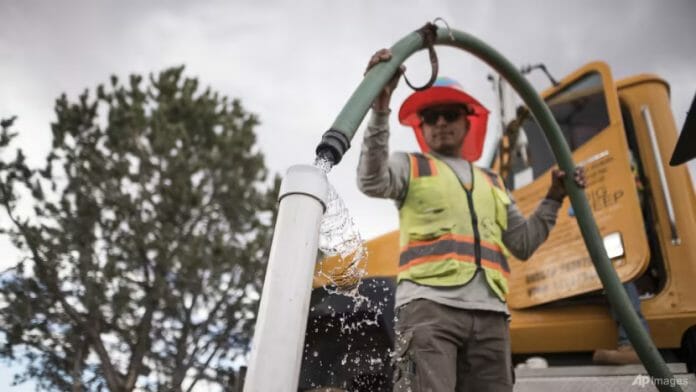Tens of millions of people in the United States do not have safe drinking water, while more than 2 million are living without running water, indoor plumbing or flush toilets.
Access to clean drinking water is not a given, even in one of the world’s wealthiest countries.
In Navajo Nation, for instance, a third of the families are living without running water in their homes.
For decades, leaders of the self-governing region in the US have fought for access to water from the lower Colorado River.
Now, its rights to draw water from the Colorado River are being considered in a Supreme Court case.
INCREASINGLY STRAINED COLORADO RIVER
The Navajo Nation was founded under an 1868 treaty, when the US said it would give a permanent home to the Native American Navajo people after forcing them off their native lands. The region spans parts of the states of New Mexico, Arizona and Utah.
Climate change could put water access even further out of reach for homes there.
The entire American Southwest is in the grips of a 23-year megadrought, with researchers saying it is the driest it has been in at least 1,200 years and there is no end in sight.
The Colorado River, which provides water to 40 million Americans across seven states, is at the centre of the contentious brawl over a vanishing water supply.
The river’s flow has dropped by 20 per cent since 2000.
“We simply don’t have enough water to go around,” said assistant professor Laura Condon of the University of Arizona’s Department of Hydrology and Atmospheric Sciences.
“For every 1 degree Celsius increase, we should expect about a 10 per cent decrease in flows in the river. We do expect that the future of the Colorado River is a drier future.”
Meanwhile, the government has asked the states to slash their water usage. However, they have not managed to reach an agreement.
On the battle over water access from the Colorado River for the native people, assistant research professor Heather Tanana of the University of Utah’s S.J. Quinney College of Law said it “definitely is increasing tensions”.
“Everyone is wondering, where is my water going to come from? And nobody wants to give up their current rights,” she added.
“But the reality is that tribal nations haven’t been able to fully utilise their water rights. And so what that has created is an unequal playing field and real imbalances in power.”
ACCESS TO CLEAN WATER
Now, the water rights case has reached the Supreme Court, which must decide how far the government’s responsibilities go in ensuring water access on the Native American reservation, said observers.
Even as they wait, members of the Navajo tribe are left securing their own future water supply.
To ensure Navajo Nation residents have access to clean water, non-profit organisation DigDeep, which carries out projects that bring running water into American homes, has installed more than 560 off-grid water systems in the region.
Massive tanks are dug into the ground and filled monthly with clean water.
When asked if she sees these water systems as a permanent solution, Ms Cindy Howe, deputy director of the Navajo Water Project at DigDeep said: “It’s half and half.”
She added: “If they’re close to a water line, then we’re going to try to help them get that water to their homes. It’s going to be ongoing for a long, long time.”
By Toni Waterman and Calvin Yang









